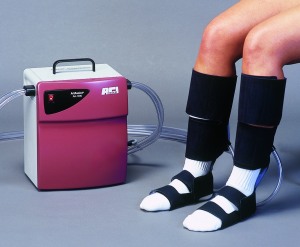Intermittent pneumatic compression (referred to as IPC)
As a pioneering technology, ArtAssist®…The Arterial Assist Device® faces resistance in the medical community at large. In this case, Ireland’s Health Information and Quality Authority (HIQA) cites the “lack of high quality, reliable evidence to support the widespread adoption of this technology” in its Health Technology Assessment (HTA).
The ArtAssist® device has been clinically shown to drastically improve circulation in patients with limb-threatening ischemia, a result of advanced peripheral arterial disease (PAD). Many doctors, including Mr. Sultan at the Galway Clinic, prescribe ArtAssist® device therapy to patients who are not candidates for surgical intervention.
Understandably, doctors responsible for the well-being of their patients may be skeptical of new technologies such as IPC to treat PAD. The fact remains, however, that the only “widespread” course of action after failed attempts at revascularization is amputation of the limb. Since PAD often affects the aged population, the aftermath of amputation can be extremely detrimental to a patient’s quality of life in addition to being a financial burden on the state.
Mr. Sultan, in response to the HTA report:
“The question is, is it a safe procedure, does it save limbs, does it decrease pain and does it control ulcers? The answer in all these cases is yes.”
Mr. Sultan continues to say that he has saved over 500 limbs with this IPC technology over the past eight years, which would have otherwise been scheduled for amputation. Furthermore, numerous studies on this device have been published in Vascular and Endovascular Surgery, a peer reviewed medical journal. The cost of renting the machine for three months is comparable to one night in a hospital bed.
To read the article in full, please visit: http://www.imt.ie/news/latest-news/2013/07/hta-on-ipc-is-challenged-by-surgeon.html?doing_wp_cron











